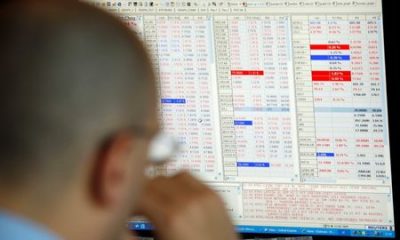Forex
Dollar bounces as US retail sales beat expectations
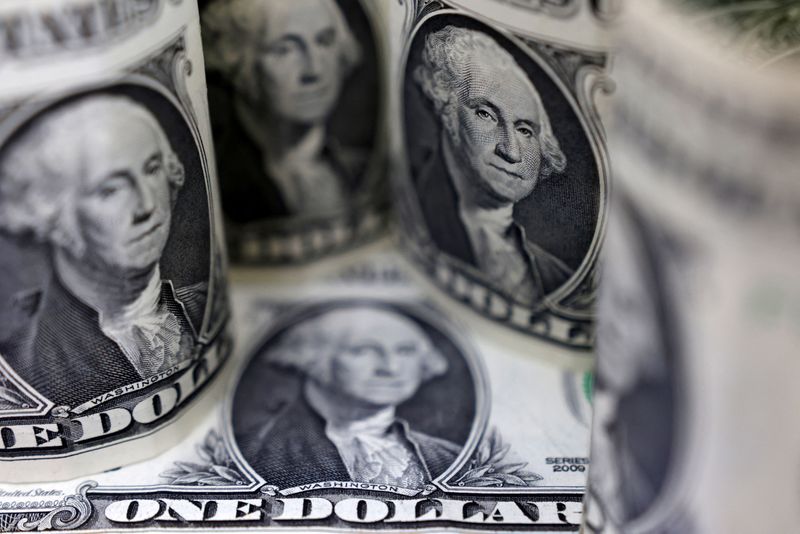
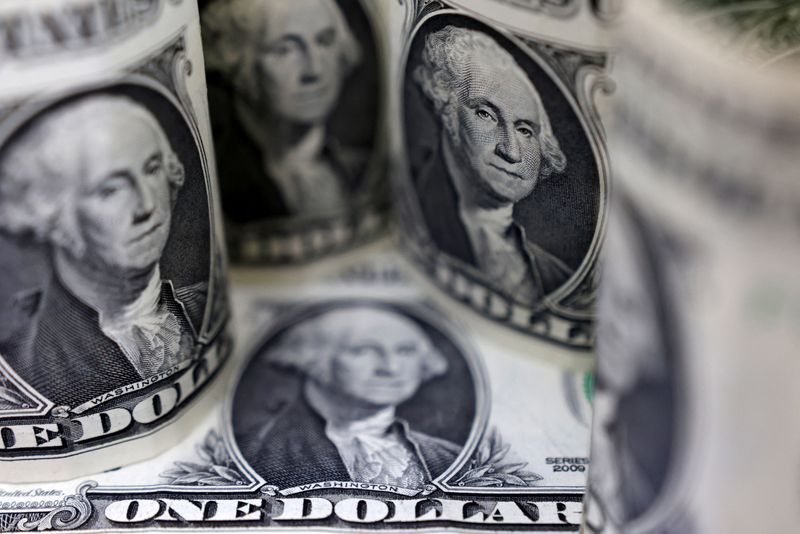
© Reuters. U.S. Dollar banknotes are seen in this illustration taken July 17, 2022. REUTERS/Dado Ruvic/Illustration/File photo
By Karen Brettell and Samuel Indyk
NEW YORK/LONDON (Reuters) – The dollar gained on Tuesday after data showed that U.S. retail sales rose more than expected in September, with investors also focused on a busy week of speeches by Federal Reserve officials.
Retail sales rose 0.7% last month as households boosted purchases of motor vehicles and spent more at restaurants and bars.
“The whole idea of the U.S. economy slowing down in Q4 was that the consumer would pull back, and they ended Q3 on a very strong note,” said Marc Chandler, chief market strategist at Bannockburn Global Forex.
That said, “we haven’t seen as big of a rally in the dollar as one might have expected on such a strong retail sales number,” he added.
The was last up 0.16% at 106.40. It is holding below the 107.34 level reached on Oct. 3, the highest since November 2022.
The euro fell 0.11% to $1.0548. It is up from $1.0448 on Oct. 3, the lowest since December 2022.
Investors are focused on speeches this week by Fed officials, including Fed Chair Jerome Powell on Thursday, for further clues about interest rate policy.
The officials will enter a blackout period on Oct. 21 before the Fed’s Oct. 31 – Nov. 1 meeting.
Traders are evaluating whether the U.S. central bank may hike rates again as it battles to bring inflation closer to its 2% annual target.
Fed funds futures traders are pricing in a 43% chance of an additional interest rate hike this year, but only 12% odds of a rate increase next month, according to the CME Group’s (NASDAQ:) FedWatch Tool.
The yen briefly surged but quickly trimmed gains after a media report that the Bank of Japan was considering raising its core CPI forecast for the 2023 and 2024 fiscal years but maintaining the inflation outlook for 2025.
The yen was last 149.77 per dollar, having strengthened to 148.75 after the report, as analysts said the knee-jerk reaction to higher inflation forecasts in the near term was negated by the longer-term projections.
“Central banks are not trying to hit the CPI targets in the near term,” said Colin Asher, senior economist at Mizuho.
“For my part, I see a decent risk that the BoJ is underestimating the risks of the CPI remaining elevated into FY25, which is one reason why I expect that the BoJ will be forced to tighten policy in the New Year,” Asher added.
Investors were also on edge for any signs of intervention by the Japanese authorities as the yen traded close to the 150 level that prompted officials to step in to buy the currency in 2022.
Japan’s top financial diplomat Masato Kanda said on Monday the yen was still perceived as a safe-haven asset like the dollar and the Swiss franc despite its recent weakness, and was benefiting from demand due to the conflict in the Middle East.
LOONIE, POUND DIP AS DATA DAMPENS HIKE EXPECTATIONS
The Canadian dollar weakened after Canada’s annual inflation rate unexpectedly slowed to 3.8% in September and underlying core measures also eased, prompting markets and analysts to trim bets for another interest rate hike next week.
The U.S. dollar was last up 0.40% at 1.366 Canadian dollars.
The pound dipped after growth in British workers’ regular pay slowed from a previous record high and job vacancies also dropped, although the publication of some labour market data, including the unemployment rate, was delayed until next week.
Sterling was last at $1.2147, down 0.56% on the day, after jumping 0.6% on Monday.
The New Zealand dollar fell 0.79% to $0.5882 after data on Tuesday showed consumer inflation hit a two-year low, reducing expectations the central bank will hike the cash rate further in November.
========================================================
Currency bid prices at 10:00AM (1400 GMT)
Description RIC Last U.S. Close Pct Change YTD Pct High Bid Low Bid
Previous Change
Session
Dollar index 106.4000 106.2600 +0.16% 2.812% +106.5200 +106.1000
Euro/Dollar $1.0548 $1.0561 -0.11% -1.55% +$1.0579 +$1.0533
Dollar/Yen 149.7700 149.5150 +0.18% +14.24% +149.7900 +148.7500
Euro/Yen 157.98 157.87 +0.07% +12.60% +158.1000 +157.2500
Dollar/Swiss 0.9022 0.9003 +0.21% -2.44% +0.9032 +0.8997
Sterling/Dollar $1.2147 $1.2217 -0.56% +0.45% +$1.2217 +$1.2134
Dollar/Canadian 1.3666 1.3612 +0.40% +0.86% +1.3703 +1.3606
Aussie/Dollar $0.6344 $0.6343 +0.03% -6.92% +$0.6367 +$0.6335
Euro/Swiss 0.9514 0.9504 +0.11% -3.85% +0.9519 +0.9499
Euro/Sterling 0.8681 0.8644 +0.43% -1.84% +0.8690 +0.8642
NZ $0.5882 $0.5929 -0.79% -7.36% +$0.5927 +$0.5872
Dollar/Dollar
Dollar/Norway 10.9830 10.9320 +0.57% +12.02% +11.0100 +10.9330
Euro/Norway 11.5921 11.5277 +0.56% +10.47% +11.6149 +11.5250
Dollar/Sweden 10.9494 10.9181 +0.27% +5.20% +10.9670 +10.8950
Euro/Sweden 11.5534 11.5228 +0.27% +3.62% +11.5580 +11.5170
Forex
Dollar-positive risks from US election outcome “moderate”, UBS says
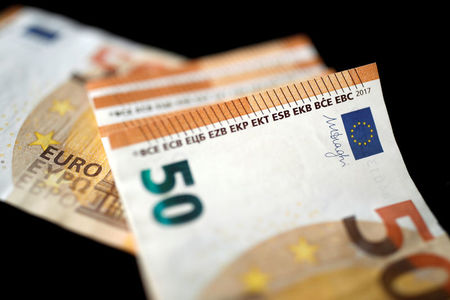
Investing.com — The US dollar is generally trading above its implied fair value, potentially hinting at support from a recent uptick in the chances that Donald Trump will win November’s US presidential election, according to analysts at UBS.
However, they noted that the greenback remains within its standard deviation bands, which help account for volatility in movements in the currency. This suggests that “any dollar-positive election risk premium is still moderate,” the analysts said.
Over the past month, a gauge comparing the dollar to a basket of its currency pairs has climbed by more than 3%.
The move comes as prediction markets like Kalshi and PredictIt show Trump is the clear favorite to emerge victorious following the Nov. 5 ballot.
However, these bets have received some scrutiny because they have diverged from national polling averages, which indicate that Trump’s Democratic rival Kamala Harris holds a narrow advantage with only two weeks of campaigning left. Crucially, both candidates are all but tied in several key battleground states that are tipped to have a heavy impact on the outcome of the election.
A victory for Trump, who has called for tax cuts, looser financial rules and sweeping tariffs, could provide some support to the dollar, analysts have said. For example, his proposal to impose a blanket levy on imports into the US could dent Asian and European exporters, possibly leading local central banks to slash interest rates. This would, in turn, potentially weaken their currencies and bolster the dollar.
Speaking to Bloomberg News last week, Trump dismissed concerns these trade policies would hit the US economy, arguing that they would instead help “bring companies back to our country”.
Outside of the election, analysts cited by Reuters have said the dollar has been boosted by expectations that overseas central banks will likely have to cut interest rates deeply because their economies are not growing as fast as the US. Meanwhile, uncertainty still surrounds the pace of the Federal Reserve’s much-anticipated policy easing cycle following a jumbo 50-basis point rate reduction by the central bank in September.
(Reuters contributed reporting.)
Forex
Goldman Sachs says euro could drop 10% under Trump tariffs and tax cuts
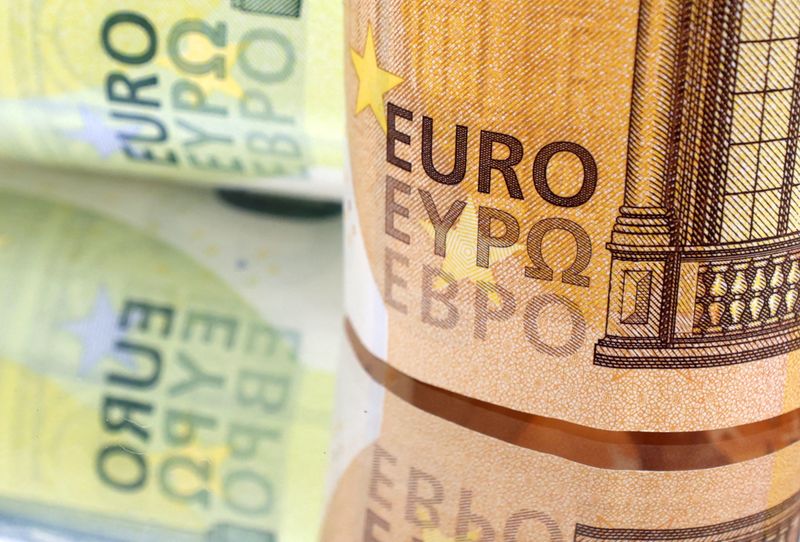
By Harry Robertson
LONDON (Reuters) – Goldman Sachs said on Tuesday the euro could fall as much as 10% – implying a drop below $1 from current levels – in a scenario in which Donald Trump imposes widespread tariffs and cuts domestic taxes if he wins the Nov. 5 U.S. presidential election.
Republican former President Trump is currently neck and neck with Democratic Vice President Kamala Harris, but Trump’s radical economic policies would likely have the bigger impact on Europe, a key trading partner of both the United States and China.
Goldman said a scenario in which Republicans win the presidency and Congress could lead to higher tariffs and domestic tax cuts that would act as stimulus for the economy.
A 10% U.S. tariff on all imports and a 20% levy on Chinese products, combined with tax cuts, could cause the dollar to rally sharply and the euro to drop 8% to 10%, Goldman Sachs analyst Michael Cahill said in a note on Tuesday. The euro last traded at $1.083. It last traded below parity in November 2022.
Both measures would likely push up inflation, implying significantly higher interest rates in the U.S. than Europe that would boost the dollar’s appeal.
“We expect the strongest dollar response to come from a Republican sweep, which would open the door to larger tariff increases in combination with domestic tax cuts,” Cahill wrote
A narrower trade war, in which Trump only imposes further tariffs on China, could see the euro fall by around 3%, Cahill said.
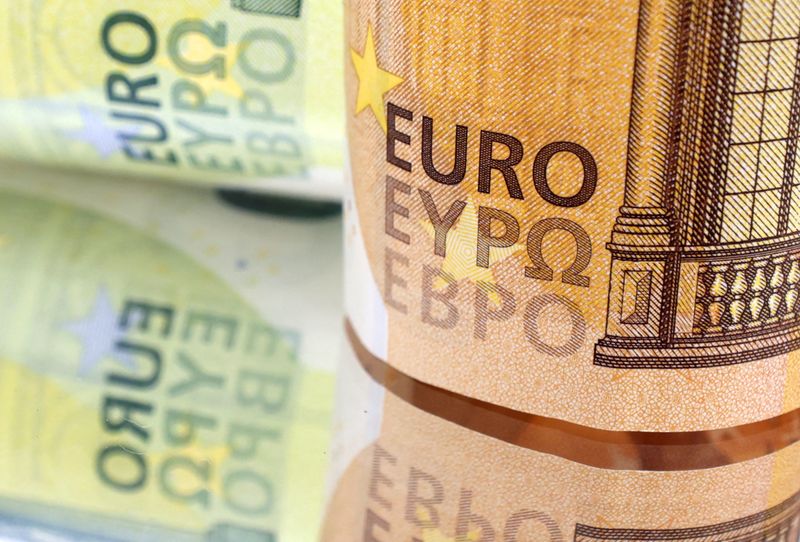
“A Democratic sweep or divided Democratic government would likely result in some initial dollar downside, as markets reprice the prospect of more dramatic changes in tariffs.”
The euro has dropped 2.7% so far in October, as the U.S. economy has pulled away from Europe, and as some investors have positioned for higher tariffs after a potential Trump victory.
Forex
Dollar just off August high, US rates and election in focus
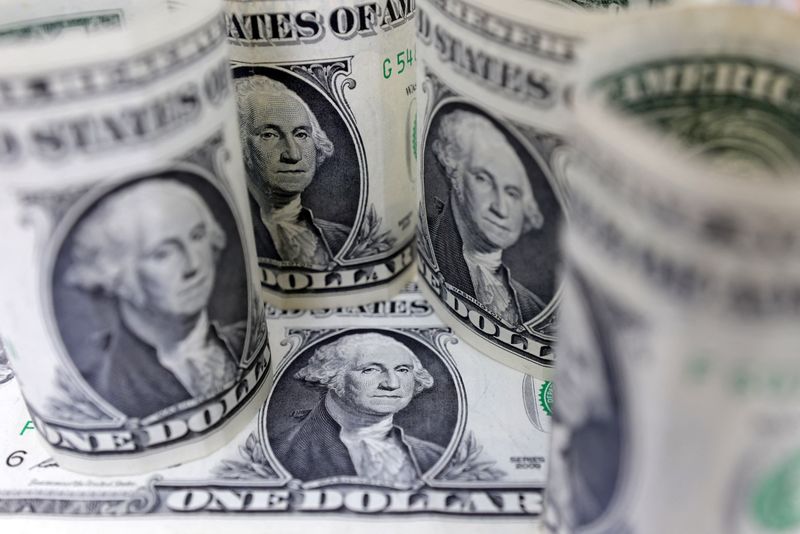
By Stefano Rebaudo
(Reuters) -The U.S. dollar was just off a 2-1/2 month high on Tuesday on expectations the Federal Reserve will take a measured approach in easing its policy, while a too-close-to-call U.S. election campaign kept investors on edge.
The dollar’s strength, boosted by rising Treasury yields, kept pressure on the yen, euro and sterling, a theme that has been building over the past few weeks as traders scale back their bets on rapid U.S. rate cuts.
Benchmark 10-year Treasury yields rose 3 bps in London trade to a fresh 12-week high as investors priced for a more robust American economy.
Some analysts argued that the release of the Beige Book late on Wednesday could be the biggest threat to the greenback this week, with the previous summary of economic conditions regarded by some as the main trigger for the 50-basis-point-(bp)-rate cut in September that kicked off the Fed’s easing cycle.
Markets are pricing in an 87% chance of the Fed cutting rates by 25 bps next month, versus a 50% chance a month earlier, when investors saw an equal likelihood of a larger 50-bp cut, the CME FedWatch tool showed.
Traders are anticipating another 40 bps of easing overall for the rest of the year.
“The U.S. dollar rose recently on the hawkish repricing of expectations for the Fed monetary policy and because uncertainty regarding U.S. elections reduced risk appetite supporting safe-havens,” said Nick Andrews, strategist at HSBC.
However, U.S. elections are still the main focus.
Markets expect the strongest dollar response from a Republican sweep, which should open the door to larger increases in trade tariffs in combination with fiscal stimulus.
A smaller rally for the greenback is seen in response to a divided Republican government outcome, while a Democratic sweep or a divided Democratic government would likely result in some initial downside.
The , which measures the U.S. currency versus six others, was last at 103.91, having touched 104.02 on Monday, its highest since Aug. 1. The index is up more than 3% so far this month.
The euro last bought $1.0827, near its lowest since Aug. 2, while sterling was at $1.3006, near its lowest since Aug. 20.
Euro zone PMI data on Thursday could provide an additional downward push to the single currency if it underlines the poor economic situation in the euro area and boosts bets on future European Central Bank rate cuts.
ECB speakers will also be in focus after President Christine Lagarde delivered a dovish message last week.
“The key question is: are the hawks fine with Lagarde’s sanguine disinflation view, a gradual shift in focus to growth and such a dovish market pricing?” said Francesco Pesole, forex strategist at ING.
“Given some lingering pockets of sticky services inflation in the euro zone, the answer is probably no.”
ELECTION IN FOCUS
With the U.S. election just two weeks away, the rising odds of former President Donald Trump winning are boosting the dollar, since his proposed tariff and tax policies are seen as likely to keep U.S. interest rates high.
“Even small changes in tight polls could drive seemingly erratic swings in market sentiment,” said Antti Ilvonen, forex analyst at Danske Bank.
The yield on the benchmark U.S. 10-year Treasury note rose to its highest since July 26 at 4.22%.
That weighed on the yen, which was roughly unchanged at 150.88, after touching a near three-month low of 151.10 per dollar.
The Bank of Japan is carefully looking at the upside risks from rising import prices as the yen weakens, Executive Director Takeshi Kato was quoted as saying by Jiji Press on Tuesday.
The yen weakness comes with Japan set to conduct a general election on Oct. 27. While opinion polls vary on how many seats the ruling Liberal Democratic Party will win, markets have been optimistic that the LDP, along with junior coalition partner Komeito, will prevail.
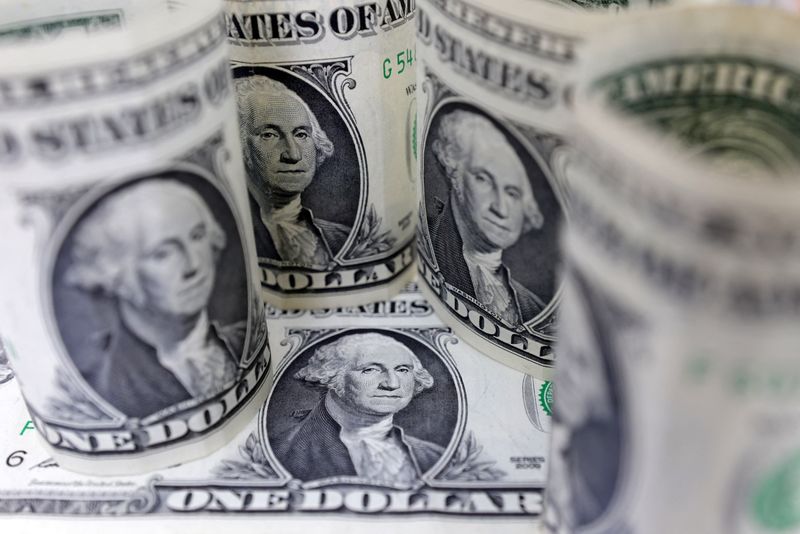
Barclays expects a suppression of pricing of BoJ rate hikes and an increase in fiscal concerns, driving the yen higher if the LDP/Komeito coalition has to form a government with additional coalition partners.
It also forecasts that in the unlikely event (tail risk scenario) of the LDP and its coalition partner Komeito being unable to form a government, risk-off moves could drive a sudden 2% drop in the dollar/yen exchange rate.

 Forex2 years ago
Forex2 years agoForex Today: the dollar is gaining strength amid gloomy sentiment at the start of the Fed’s week

 Forex2 years ago
Forex2 years agoHow is the Australian dollar doing today?

 Forex2 years ago
Forex2 years agoDollar to pound sterling exchange rate today: Pound plummeted to its lowest since 1985

 Forex2 years ago
Forex2 years agoUnbiased review of Pocket Option broker

 Cryptocurrency2 years ago
Cryptocurrency2 years agoWhat happened in the crypto market – current events today

 World2 years ago
World2 years agoWhy are modern video games an art form?

 Commodities2 years ago
Commodities2 years agoCopper continues to fall in price on expectations of lower demand in China

 Forex2 years ago
Forex2 years agoThe dollar is down again against major world currencies





